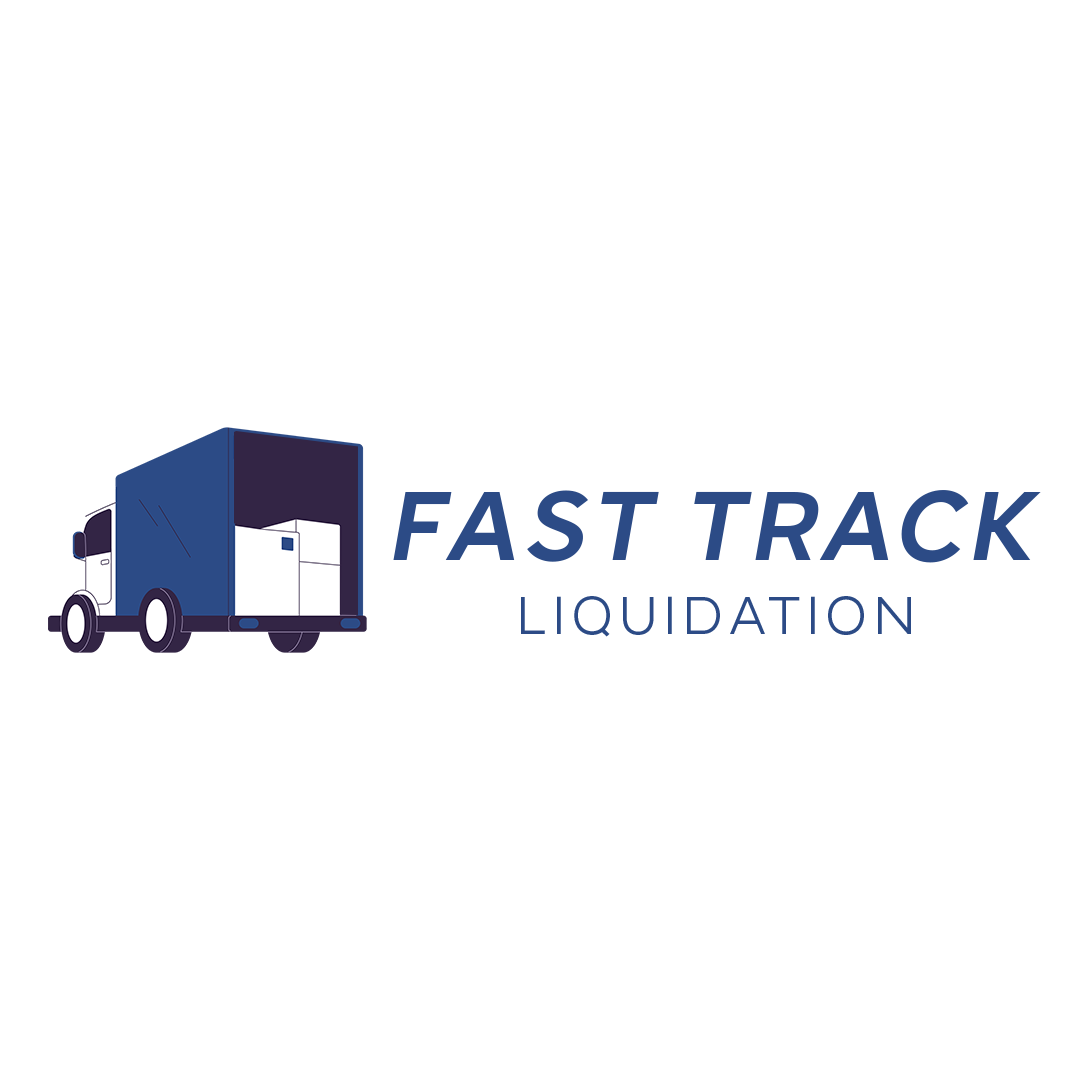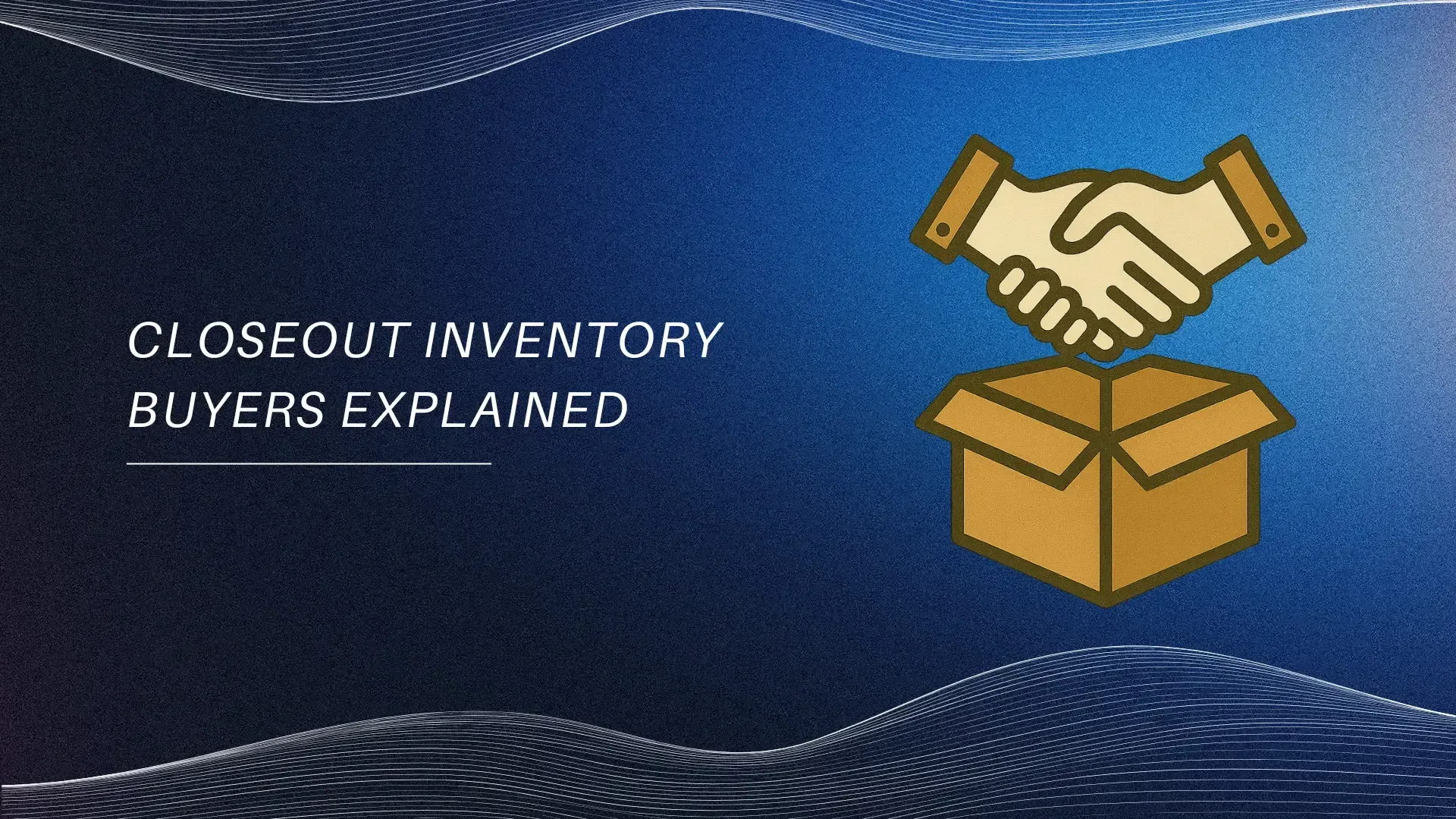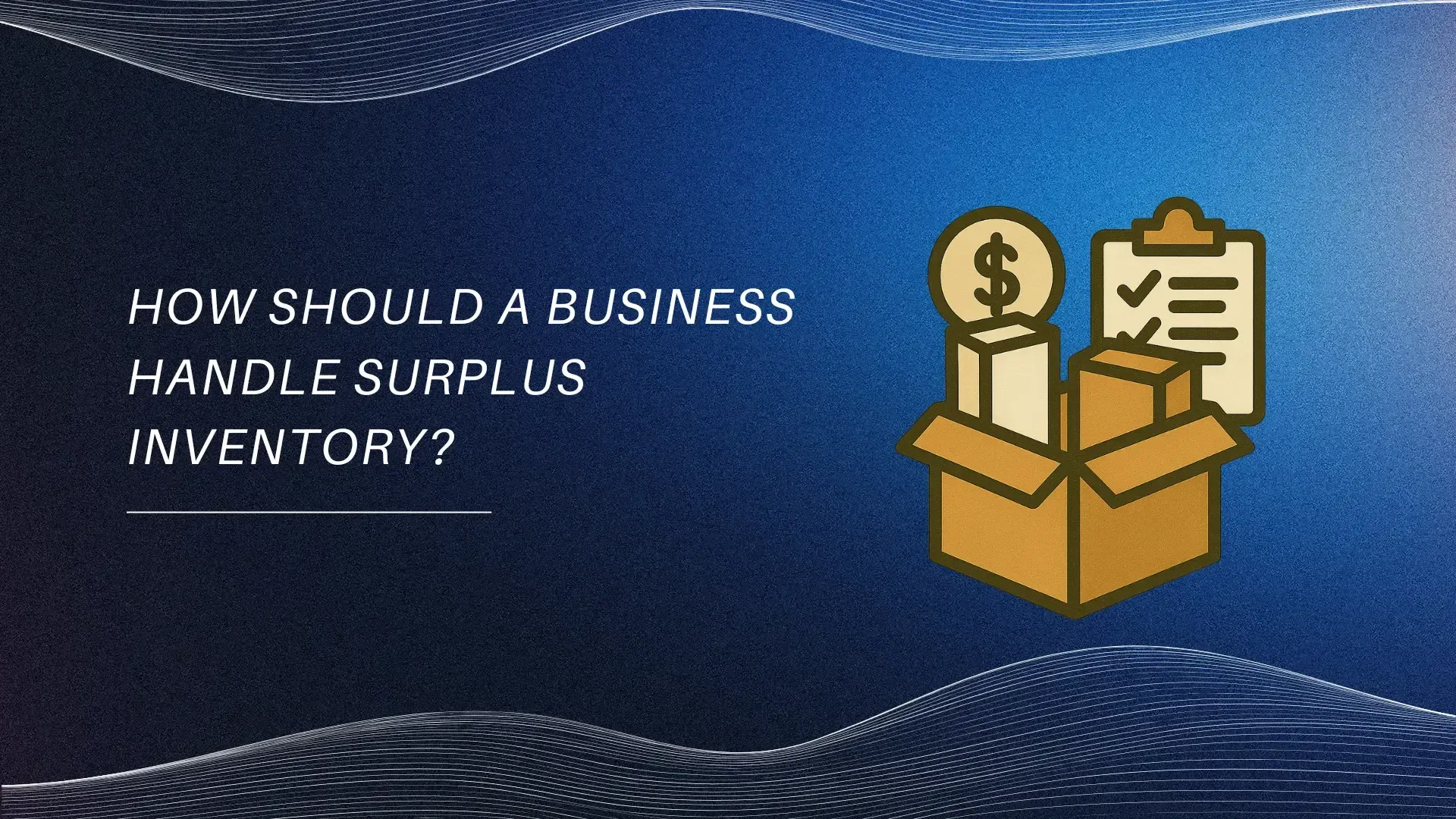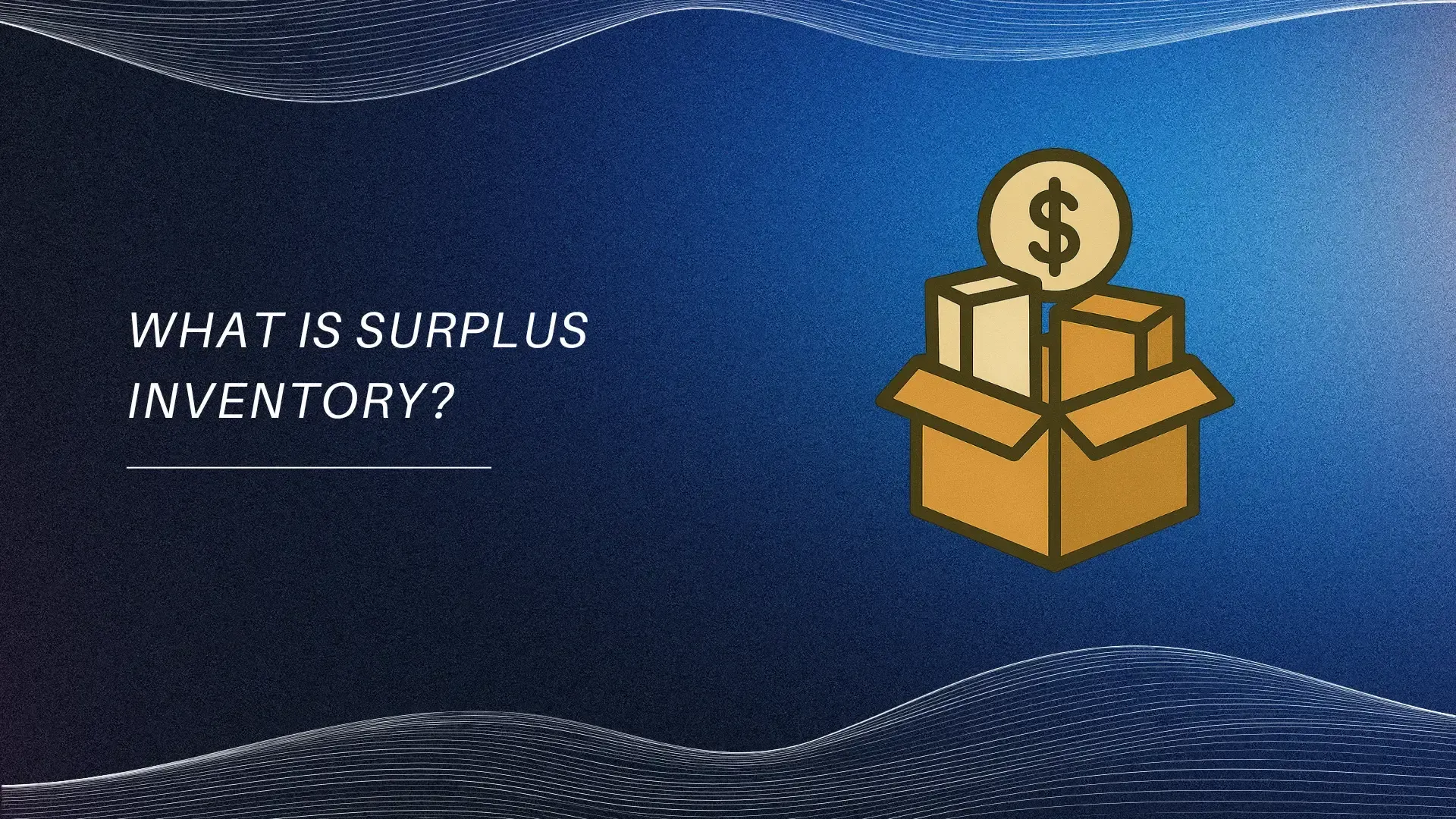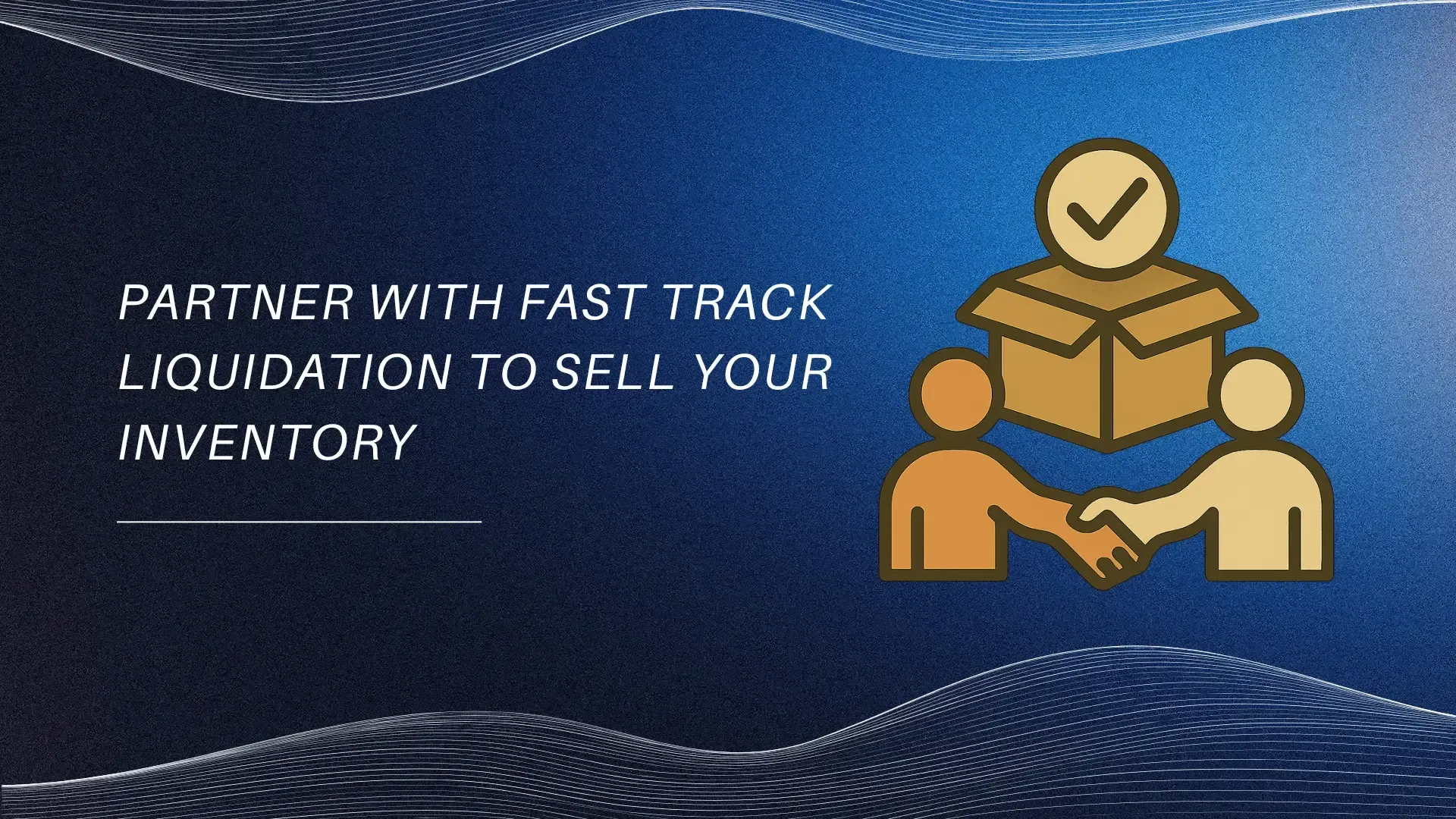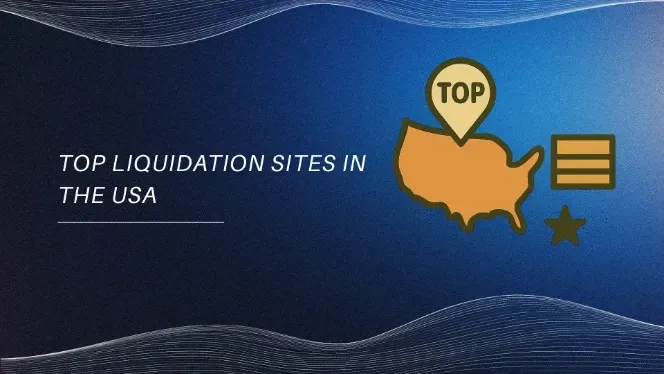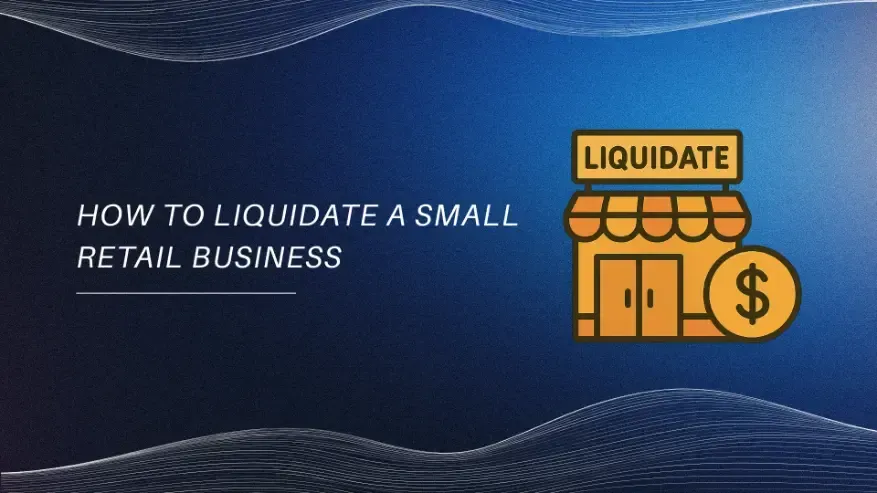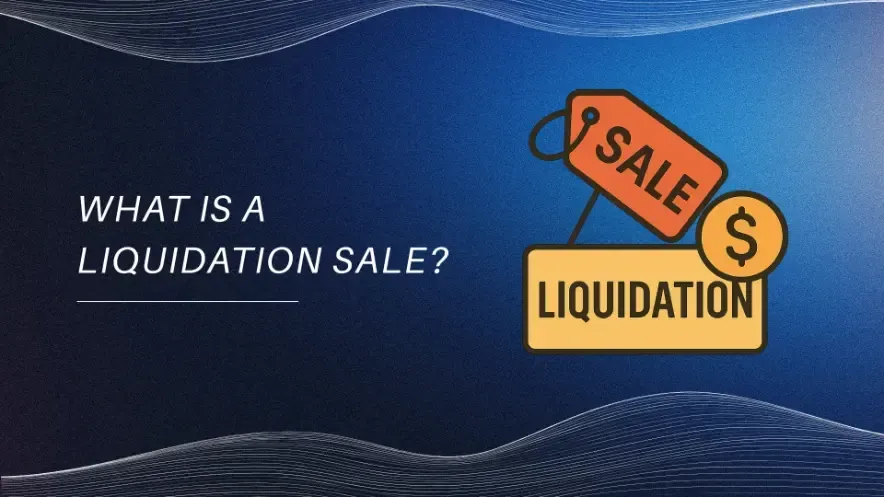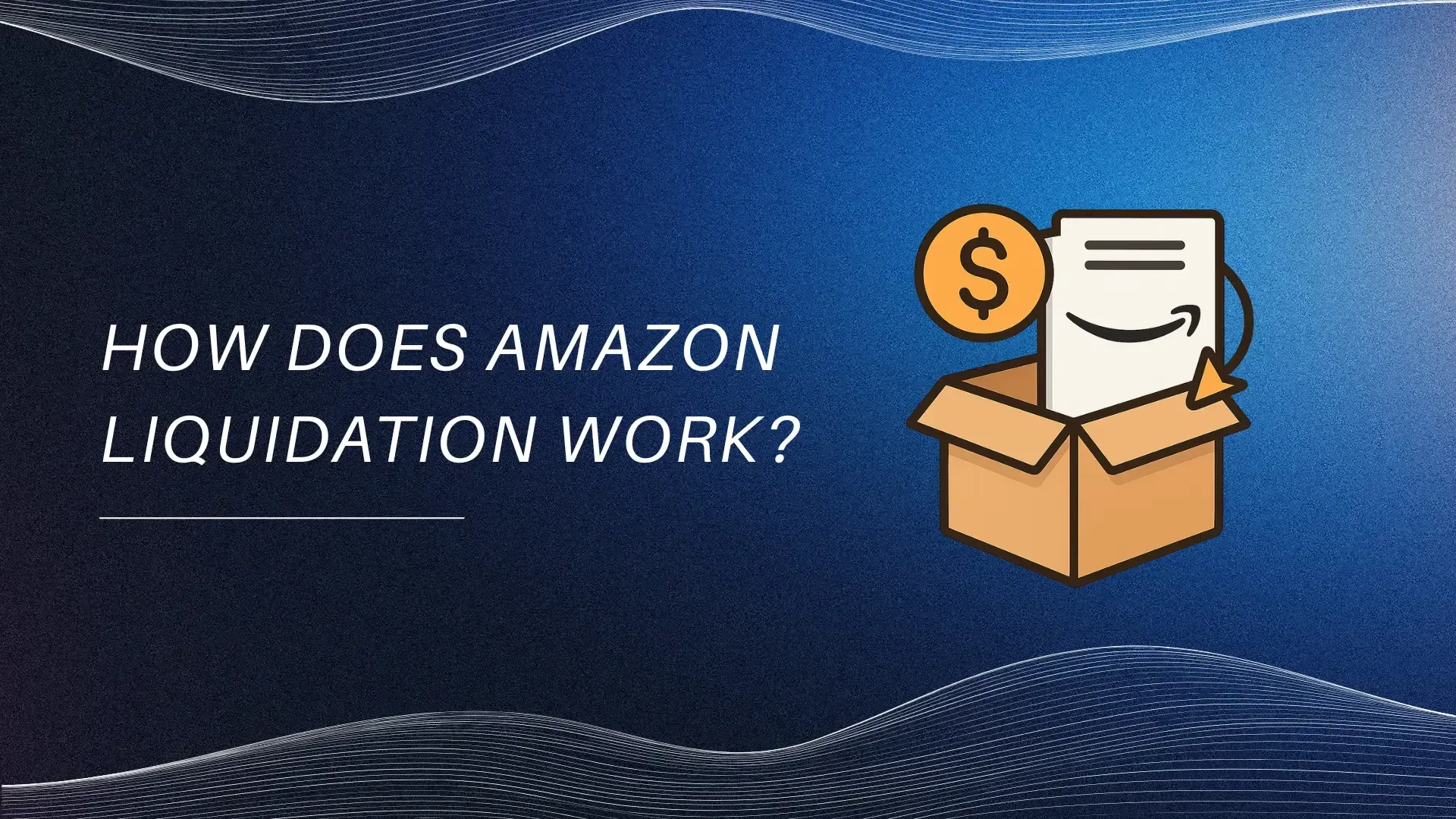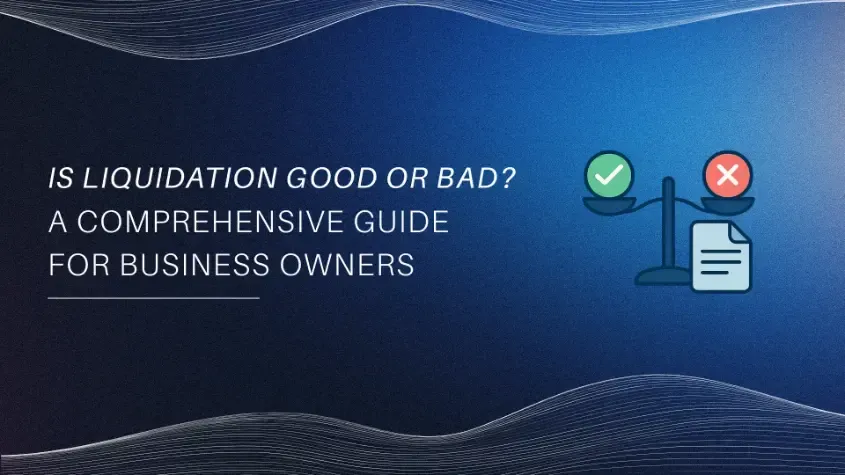How to Sell Overstock Inventory: A Comprehensive Guide
July 20, 2025
Every business, from bustling e-commerce startups to established brick-and-mortar retailers, faces a common challenge: overstock inventory.
It's the silent drain on resources, tying up capital and occupying valuable space. But understanding how to effectively manage and, more importantly, sell overstock is crucial for maintaining healthy cash flow and fostering sustainable growth.
This guide delves into the strategic approaches for liquidating excess inventory and implementing proactive measures to prevent its recurrence. Our aim is to equip US businesses with the knowledge and tools to transform what might seem like a liability into a strategic advantage, ensuring your shelves are stocked with what customers want, when they want it.
Understanding the "Why": Causes and Costs of Overstock
Before we explore solutions, it's essential to understand the root causes and the true cost of holding onto excess inventory. Overstock isn't just a physical presence; it represents a significant financial burden.
Common Causes:
- Inaccurate Forecasting: Perhaps the most prevalent cause, misjudging future demand can lead to ordering too much of a product. This often stems from relying on gut feelings rather than robust data analysis.
- Seasonal Fluctuations and Trends: What sells like hotcakes in summer might sit idle in winter. Missing shifts in seasonal demand or failing to adapt to rapidly changing consumer trends can quickly lead to excess stock.
- Unexpected Dips in Demand: Economic downturns, sudden market shifts, or even negative publicity can cause demand for certain products to plummet unexpectedly.
- Supply Chain Disruptions: Paradoxically, a fear of shortages (often after a period of disruption) can lead businesses to over-order, building up a buffer that becomes overstock when supply stabilizes.
- Poor Inventory Management Systems: Without accurate, real-time data on what's coming in, what's selling, and what's returning, businesses operate blind, making it nearly impossible to optimize stock levels.
- Product Lifecycle Nearing End: As products reach the end of their lifecycle or are replaced by newer versions, older models can quickly become overstock.
- Returns and Damaged Goods: A high volume of customer returns or items damaged in transit contribute directly to growing inventory levels that cannot be sold at full price.
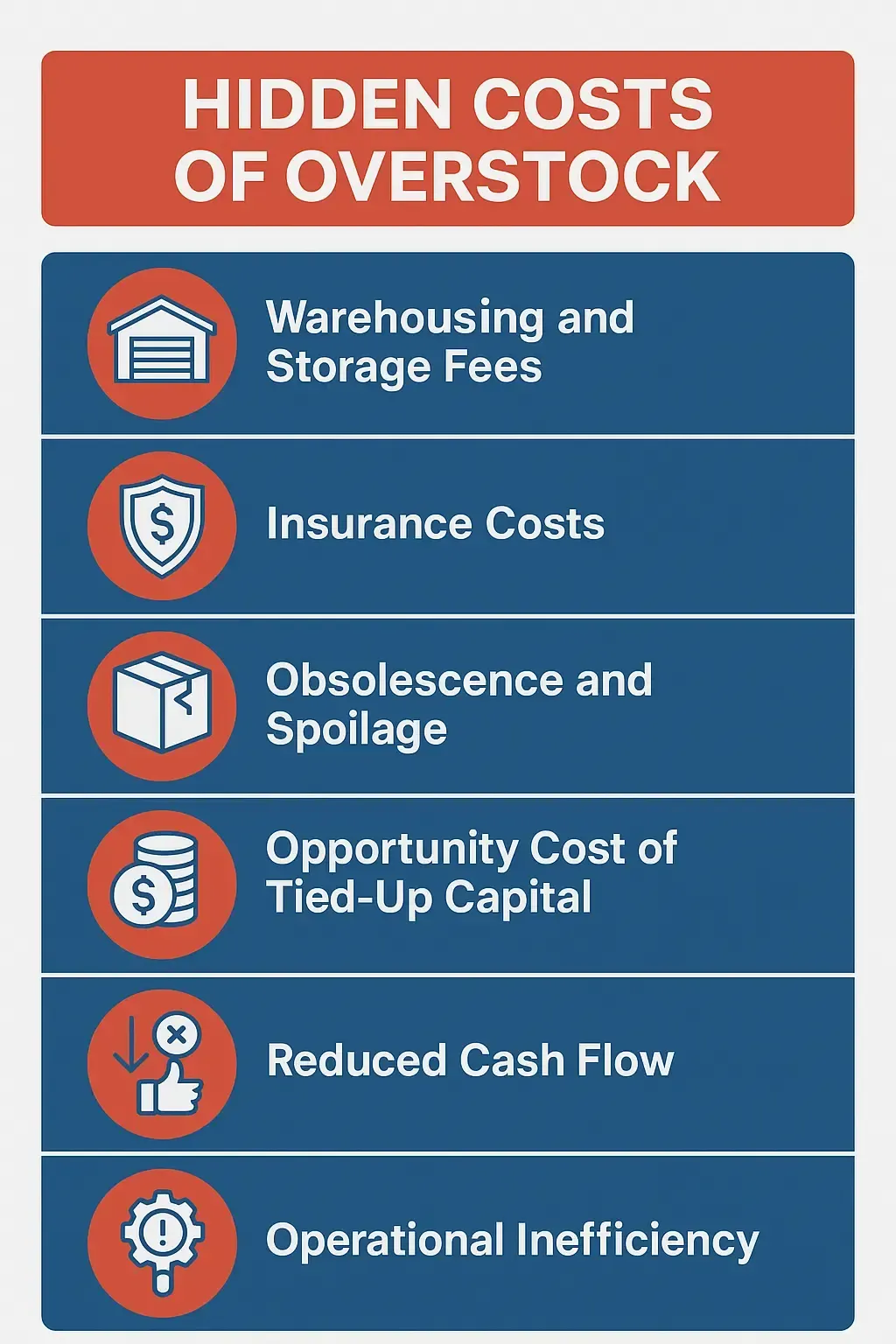
Hidden Costs of Overstock:
The visible cost of overstock is merely the tip of the iceberg. Beneath the surface lie numerous hidden expenses that erode profitability:
- Warehousing and Storage Fees: Every square foot of warehouse space costs money. As of late 2024 and early 2025, commercial warehouse rental rates in key US logistics hubs have continued to see upward pressure, making efficient space utilization more critical than ever. Unsold inventory simply consumes this expensive real estate.
- Insurance Costs: The more inventory you have, the higher your insurance premiums will be to cover potential loss, damage, or theft.
- Obsolescence and Spoilage: Products can become outdated, expire, or degrade over time, rendering them unsellable and a complete loss. Think of fashion items that go out of style or perishable goods.
- Opportunity Cost of Tied-Up Capital: Every dollar invested in unsold inventory is a dollar that cannot be used for marketing, new product development, or other growth-generating initiatives. This is capital that is literally sitting idle.
- Reduced Cash Flow: Overstock directly impacts your cash flow by tying up funds that could otherwise be used to pay suppliers, employees, or reinvest in the business.
- Impact on Brand Image: Constantly running "clearance" or "liquidation" sales can devalue your brand in the eyes of consumers, making them hesitant to purchase at full price in the future.
- Operational Inefficiency: Managing excess inventory requires additional staff time for counting, moving, and re-organizing, diverting resources from more productive tasks.
According to a study by Toolio, a leading inventory planning platform, the hidden costs of overstock can add up to a significant percentage of a product's value, sometimes reaching 25-30% beyond the initial purchase price. This emphasizes that inaction is, in itself, a costly strategy.
Immediate Strategies to Liquidate Overstock Inventory (Short-Term Solutions)
Once you've identified overstock, the goal is to move it quickly and efficiently, minimizing losses. Here are proven short-term strategies:
Strategic Pricing & Promotions
Discounting doesn't have to mean desperation. It's about smart pricing that creates urgency and perceived value.
- Clearance Sales / Flash Sales: Announce time-bound sales with significant discounts. Emphasize the limited availability and the "now or never" aspect. For instance, a "24-Hour Flash Sale" on specific items can drive immediate traffic and conversions.
- Discounting Tiers: Implement tiered discounts to encourage larger purchases. For example, "10% off one item, 20% off two, and 30% off three or more." This strategy incentivizes customers to buy more than they initially intended.
- Bundling Products: Pair slow-moving overstock items with popular, fast-selling products. Offer them as a package deal at a slightly reduced price. A popular example is "Buy a best-selling phone case, get a slow-moving screen protector for half price," or creating "mystery bundles" of various overstock items at an attractive flat rate.
- Loyalty Programs & Exclusive Offers: Reward your most loyal customers with early access or deeper discounts on overstock items. This makes them feel valued while helping you move product discreetly. Email lists and dedicated app notifications are excellent channels for this.
- Psychology of Scarcity and Urgency: Use language like "Limited Stock," "Only X Left," or "Sale Ends Tomorrow" to create a sense of urgency. This encourages immediate purchasing decisions.
Utilizing Online Marketplaces & Channels
Leverage the vast reach of the internet to find new homes for your excess inventory.
- Your Own E-commerce Store: Create a dedicated "Clearance" or "Outlet" section prominently displayed on your homepage. Use banners and pop-ups to direct traffic to these pages. Ensure these sections are easy to navigate and clearly show the original price versus the discounted price.
- Major Online Marketplaces (USA Focus):
- eBay: Excellent for selling individual items or smaller lots. It offers significant control over pricing (auction or fixed price) and allows you to reach a global audience, though the focus here is US buyers. It's particularly good for unique items or collectibles that might have a niche market.
- Amazon (Seller Central): Utilize Amazon's FBA (Fulfillment by Amazon) liquidation program for eligible items, or list products directly on Amazon Outlet. Amazon's immense customer base makes it a powerful channel, but be mindful of their fees and strict guidelines.
- Walmart Marketplace: Expanding its reach, Walmart Marketplace offers another significant platform to list products and tap into Walmart's extensive customer base. It's a strong option for consumer goods, particularly those that align with Walmart's everyday low price strategy.
- Social Media Sales:
- Facebook Marketplace: Ideal for local sales and bulk items. You can list items for free and reach a vast local audience.
- Instagram Shopping: If your products are visually appealing, leverage Instagram's shopping features to tag products in posts and stories, making them directly purchasable. Run targeted ads specifically for your overstock items to reach new, relevant audiences.
- B2B Liquidation Marketplaces (USA Specific): For larger quantities of overstock, engaging with business-to-business (B2B) liquidation platforms can be highly effective.
- Liquidation.com: A prominent online auction marketplace for surplus inventory from various industries. You can sell by lot, pallet, or truckload.
- Merchandise USA: Specializes in buying closeouts, overstocks, and customer returns, often offering quick cash for large quantities.
- B-Stock Solutions: Operates private label liquidation marketplaces for major retailers, providing a channel for direct bulk sales.
- Tip: Always research and vet these platforms thoroughly. Check reviews, understand their fee structures, and ensure they align with your business goals.
Off-Price and Discount Retailers
These retailers specialize in buying excess inventory at reduced prices and selling it to their customer base.
- Approach & Negotiation: Contact the buying departments of major US off-price retailers such as TJ Maxx, Marshalls, Ross Stores, and Burlington. They are constantly looking for new inventory. Be prepared to offer competitive pricing and discuss quantities. Understanding their typical buying cycles and product categories will increase your chances of success.
Returns & Exchanges (if applicable)
Sometimes, the best solution is to mitigate the problem at its source.
- Negotiating with Suppliers: If your overstock is due to supplier errors or unfavorable terms, attempt to negotiate returns or credits for unsold merchandise. Strong vendor relationships can facilitate this.
- Re-evaluating Return Policies: Analyze your own return and exchange policies. Are they contributing to overstock? Stricter return windows or exchange-only policies for certain items could reduce future build-ups.
Donations for Tax Benefits (USA Specific)
While not generating direct cash, donating overstock can provide significant tax advantages for US businesses.
- Under IRS Tax Code Section 170(e)(3), businesses can receive enhanced tax deductions for donating qualifying inventory to eligible charities. This deduction can sometimes be up to twice the cost of the inventory.
- Organizations like NAEIR (National Association for the Exchange of Industrial Resources) specialize in accepting corporate product donations and distributing them to schools and non-profits across the US. This provides a clear, ethical, and tax-beneficial way to clear out unwanted stock.
- Important: Always consult with a qualified tax professional or CPA to ensure your donations meet IRS requirements for maximum tax benefits. They can provide specific advice tailored to your business's situation.
Repurposing or Repackaging
Sometimes, a little creativity can transform old stock into new opportunities.
- Reworking Components: Can parts of the overstock item be salvaged and incorporated into a new, more desirable product? For example, excess fabric could become tote bags, or unused electronics components could be part of a repair kit.
- Creating Gift Baskets or Unique Sets: Combine several slower-moving items into an attractive gift basket or a themed "value set." This can make individual items more appealing as part of a larger, higher-value offering.
Long-Term Strategies to Prevent Overstock (Proactive Solutions)
While liquidation is essential, the ultimate goal is to minimize overstock from occurring in the first place. This requires a strategic, forward-looking approach to inventory management.
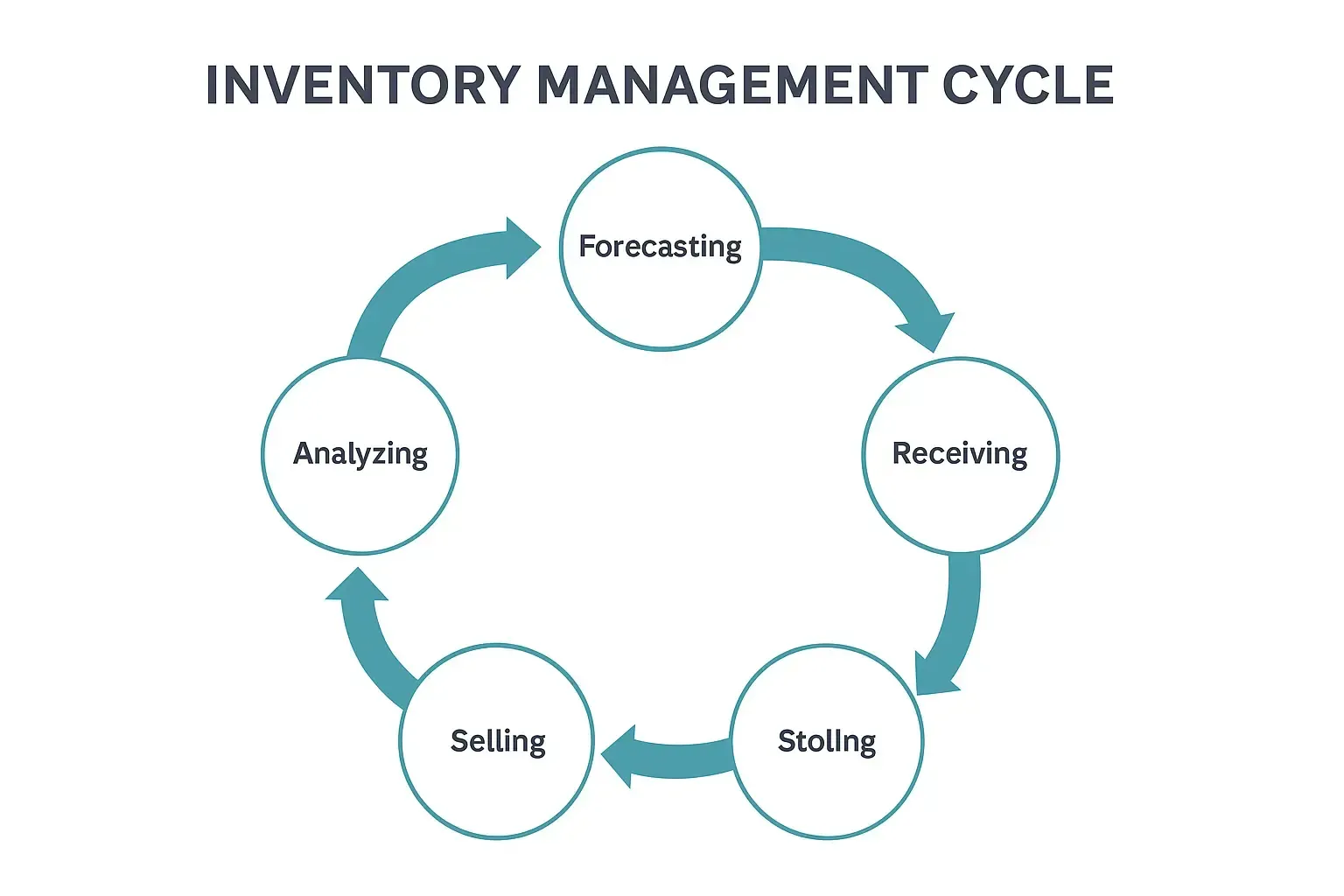
Advanced Inventory Management Systems
The bedrock of efficient inventory control is a robust system.
- Real-time Tracking: Invest in systems that provide accurate, real-time data on every item. Knowing exactly what's in stock, what's been sold, and what's in transit is paramount. Many US businesses have seen significant reductions in inventory discrepancies and improved efficiency by implementing cloud-based systems that offer live inventory updates across all channels.
- Automation: Automate reordering processes based on predefined thresholds and sales velocity. This reduces human error and ensures timely replenishment without over-ordering.
- Integrated Systems: Connect your inventory management system with your sales platform (e-commerce, POS), accounting software, and supply chain partners. This holistic view provides unparalleled insight and prevents data silos that lead to misjudgments.
Improving Forecasting Accuracy
Better predictions lead to better purchasing decisions.
- Data Analysis: Move beyond intuition. Utilize historical sales data, analyze past trends (weekly, monthly, seasonal), and integrate market research to make informed demand predictions.
- Predictive Analytics & AI: Leverage advanced software that uses artificial intelligence and machine learning to analyze vast datasets, identify complex patterns, and generate highly accurate demand forecasts. This technology can account for multiple variables, from weather patterns to social media sentiment.
- Collaborative Planning: Foster strong communication between your sales, marketing, and purchasing teams. Sales teams have direct customer insights, and marketing can predict promotional impacts, both of which are crucial for accurate forecasting. Work closely with suppliers to share forecasts and align production.
Lean Inventory Practices
Adopt principles that focus on minimizing waste and maximizing efficiency.
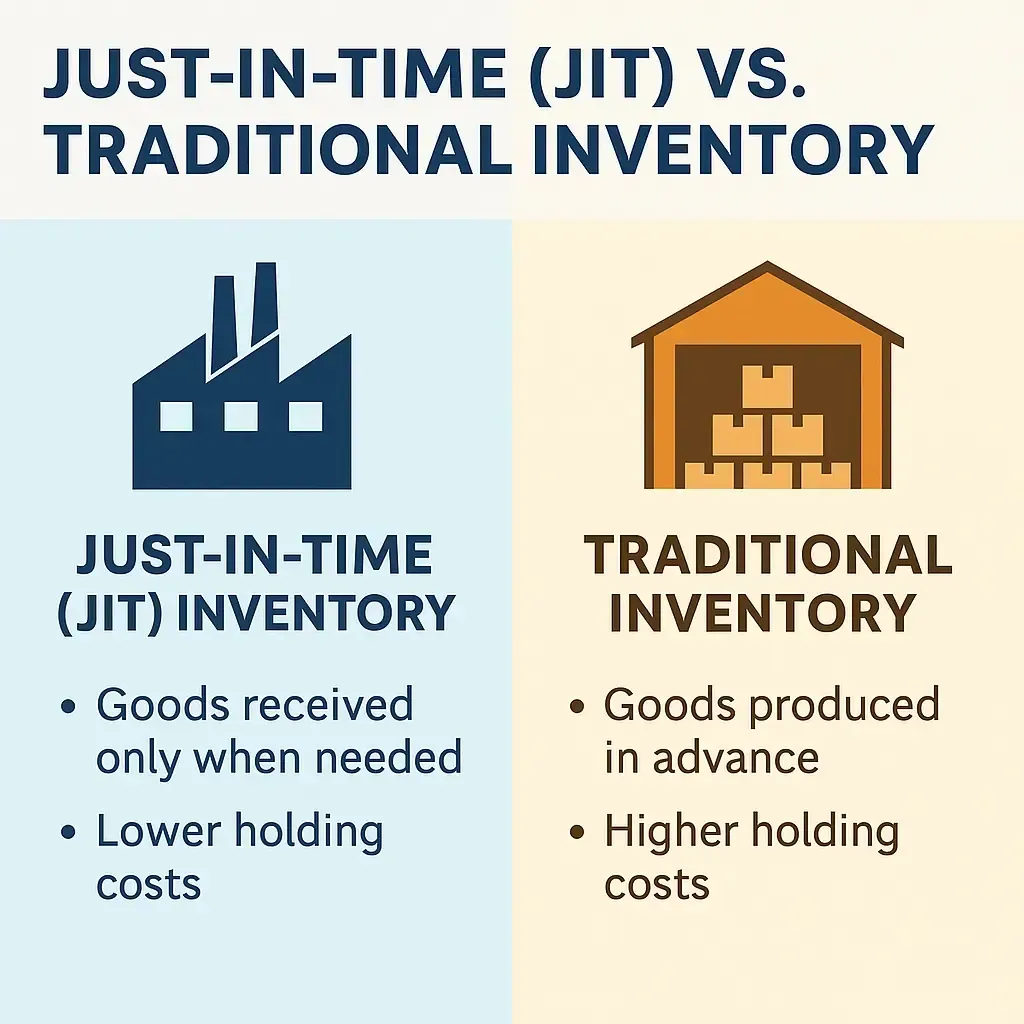
- Just-in-Time (JIT) Inventory: While not suitable for every business, exploring JIT principles means receiving goods only as they are needed for production or sale. This significantly reduces holding costs and the risk of obsolescence.
- Safety Stock Optimization: Calculate and maintain optimal safety stock levels. This is the minimum amount of inventory you keep on hand to prevent stockouts during unexpected demand spikes or supply delays, without accumulating excessive quantities. Formulas that consider lead time variability and demand variability can help determine this.
- Vendor Managed Inventory (VMI): In a VMI arrangement, the supplier takes responsibility for managing and replenishing your inventory levels. This offloads the burden from your business and can lead to more efficient stock flow.
Diversifying Sales Channels
Don't put all your eggs in one basket.
- Reduce Reliance: If you only sell through one channel, you're highly vulnerable to its fluctuations. By diversifying, you spread your risk.
- Explore New Markets: Consider selling internationally (if appropriate) or targeting new demographics within the US. This opens up new avenues for sales and can help absorb excess inventory.
Product Lifecycle Management
Proactive management of products from introduction to retirement.
- Strategic Phasing Out: Plan for the end-of-life of products. This includes pre-planned clearance sales, bundling, or gradually reducing stock orders as a product's popularity wanes, preventing it from becoming dead stock.
- Succession Planning: Introduce new products strategically to replace declining ones, ensuring a smooth transition that avoids large quantities of obsolete items.
Strong Supplier Relationships
Your suppliers are key partners in inventory management.
- Negotiate Flexible Terms: Discuss possibilities for flexible return policies, consignment agreements (where you only pay for goods after they are sold), or buy-back clauses for unsold inventory. These terms can significantly reduce your risk.
- Improve Communication: Regular, open communication about your sales forecasts and market trends can help suppliers align their production with your actual needs, preventing oversupply.
Measuring Success and Continuous Improvement
Effective inventory management is an ongoing process, not a one-time fix. Regularly assessing your performance is critical.
Key Performance Indicators (KPIs) for Overstock Management:
- Inventory Turnover Rate: How many times your average inventory is sold and replaced over a period. A higher turnover generally indicates efficient sales and less overstock.
- Inventory Carrying Costs: The total cost of holding inventory (storage, insurance, obsolescence, etc.) as a percentage of your total inventory value. Lowering this percentage is a key goal.
- Sales Velocity of Overstock Items: How quickly you're moving overstock once you've initiated liquidation strategies. This helps assess the effectiveness of your promotions.
- Gross Margin on Overstock Sales: While discounts will reduce margins, understanding the profitability of your overstock sales helps gauge the true cost of excess.
Regular Audits and Reviews:
- Scheduled Inventory Counts: Conduct regular physical counts or cycle counts to ensure your system data matches actual stock levels.
- Post-Mortem Analysis: After a significant overstock event, conduct a thorough review. What caused it? What strategies worked best for liquidation? What can be done differently next time? This learning process is invaluable.
Adapting to Market Changes: The retail landscape is dynamic. Consumer preferences, economic conditions, and supply chain capabilities are constantly evolving. Businesses must remain agile, continuously monitoring these changes and adapting their inventory strategies accordingly. What works today might need adjustment tomorrow.
Conclusion
Overstock inventory is a formidable challenge for any business, capable of stifling cash flow and hindering growth. However, by embracing both immediate liquidation tactics and robust long-term prevention strategies, US businesses can not only clear their shelves but also build a more resilient and profitable operation. The key lies in accurate forecasting, sophisticated inventory management, and a willingness to adapt to market demands.

